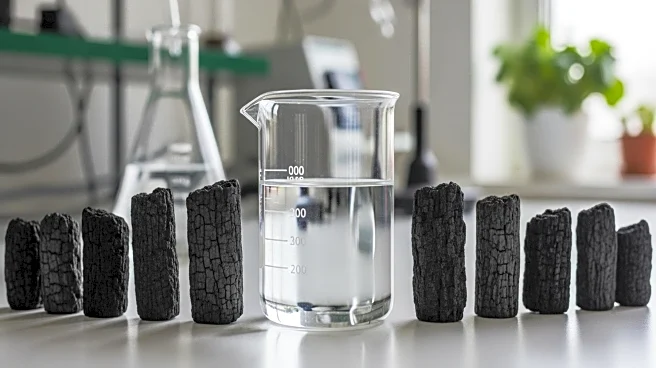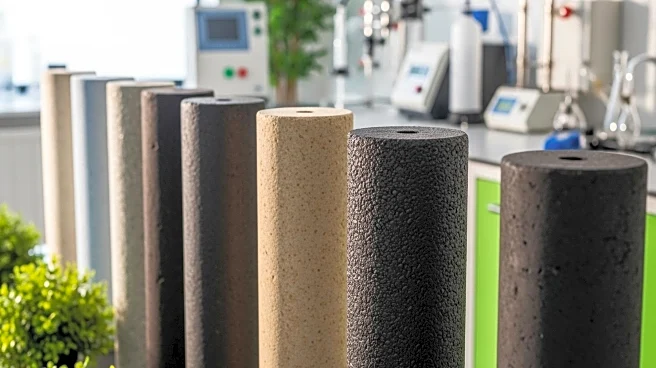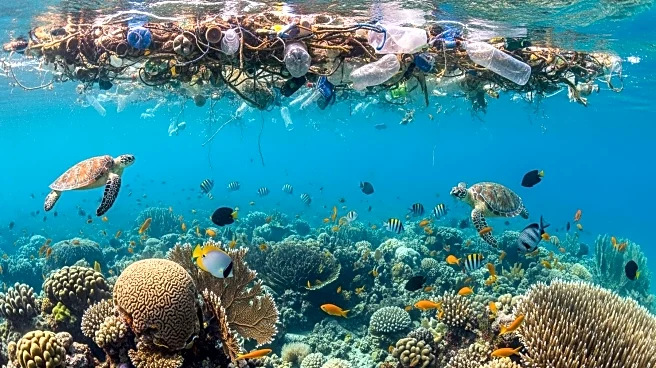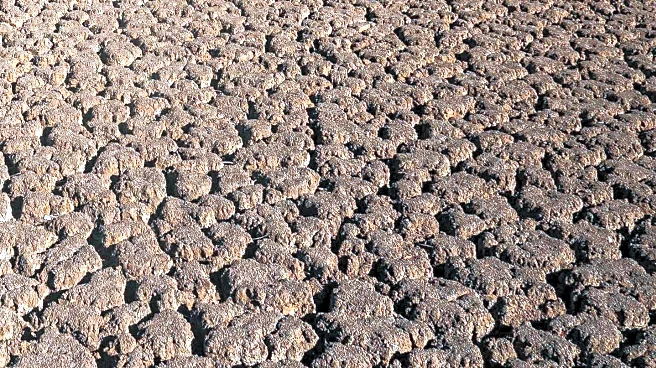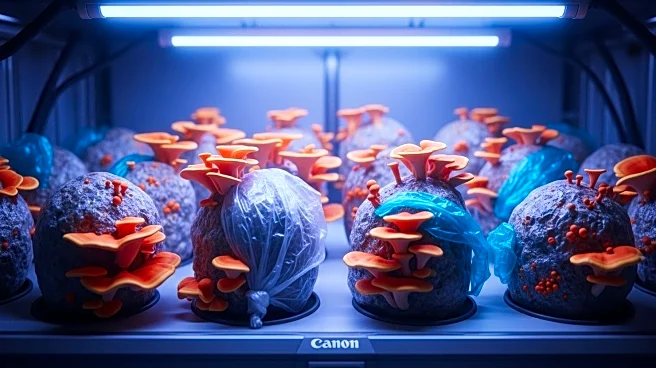What is the story about?
What's Happening?
Recent research has uncovered that biochar, a carbon-rich material, not only adsorbs pollutants but also actively degrades them through direct electron transfer. This newly discovered ability accounts for up to 40% of biochar's pollutant removal capacity. The study, conducted by Dr. Gao's team, utilized advanced electrochemical tests to demonstrate biochar's capability to break down organic pollutants without additional chemicals. This finding suggests a more efficient and sustainable method for water treatment, potentially reducing the need for chemical additives and lowering costs.
Why It's Important?
The discovery of biochar's active degradation ability could revolutionize water treatment processes, offering a greener and more cost-effective alternative to traditional methods. This advancement is significant for industries and communities seeking sustainable solutions to water pollution. By reducing reliance on chemical treatments, biochar could lower operational costs and environmental impact, benefiting both economic and ecological stakeholders. The research highlights the potential for biochar to play a crucial role in addressing global water pollution challenges.
What's Next?
The study opens avenues for further research into optimizing biochar's properties for enhanced pollutant degradation. Future developments may focus on tailoring biochar's structure to maximize its electron transfer capabilities, potentially leading to widespread adoption in water treatment facilities. As industries and policymakers seek sustainable solutions, biochar's role in environmental engineering could expand, driving innovation in pollution management strategies.
Beyond the Headlines
This discovery challenges the traditional view of biochar as merely a passive filter, positioning it as an active participant in pollutant degradation. The implications extend beyond water treatment, potentially influencing policies on waste management and environmental protection. As biochar's capabilities are further explored, it may become a key component in global efforts to combat pollution and promote sustainability.
AI Generated Content
Do you find this article useful?
